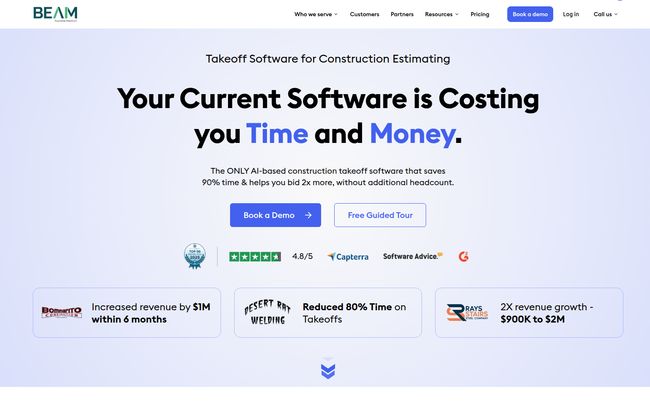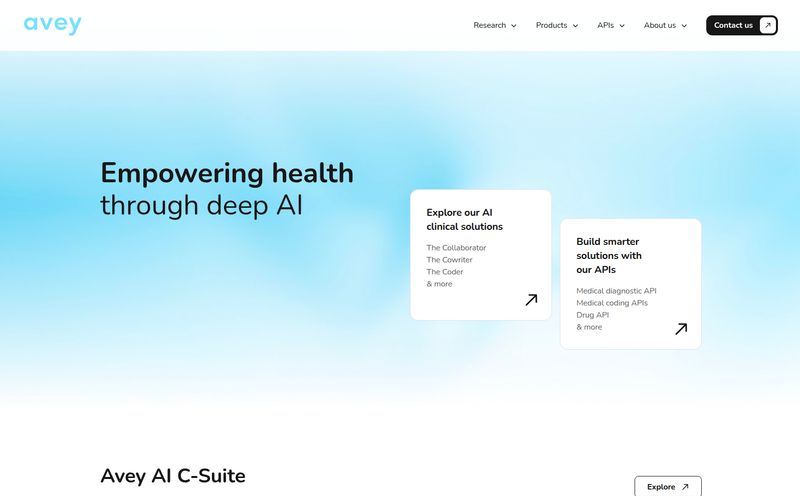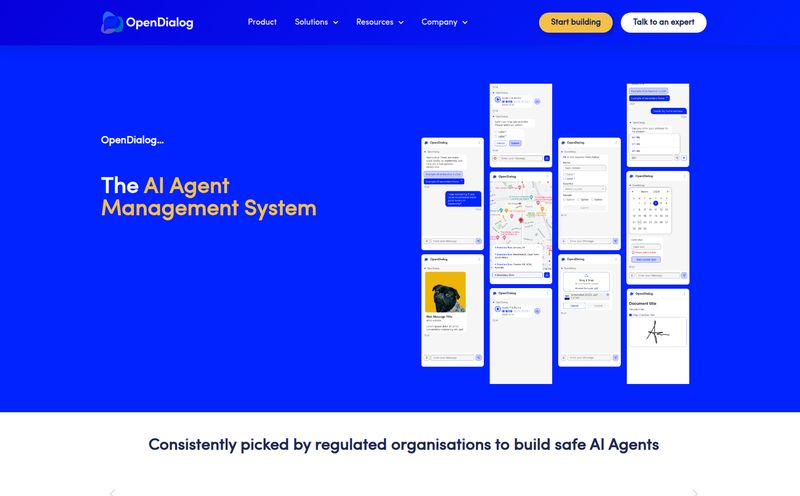If you're in construction, you've spent more nights than you can count hunched over a set of plans, fueled by questionable coffee, with a scale ruler in one hand and a highlighter in the other. Manual takeoffs. The bane of every estimator's existence. It's tedious, it's stressful, and a single slip-up, one misplaced decimal point, can be the difference between a profitable job and a catastrophic loss. I’ve been there.
For years, we've been promised software solutions that would fix all this. Some have helped, sure. But mostly, they just moved the screen-staring from a physical page to a digital one. Now, there’s a new wave of tools powered by Artificial Intelligence, and the buzz is getting pretty loud. One name that keeps popping up is Beam AI. They're making some bold claims about automating quantity takeoffs, and frankly, my inner skeptic and my inner optimist are at war. So, I decided to take a look and figure out if this is just another shiny object or a genuine game-changer for contractors.
What Exactly is Beam AI? (And Why Should You Care?)
First off, if you google "Beam AI," you might get a bit confused. You'll see talk of "agentic automation" and "AI workforces" for Fortune 500s. And that's not wrong. It seems Beam has a powerful, general-purpose AI platform. But what we're looking at today is their hyper-focused tool for the AEC industry: their AI Takeoff Software.
Think of it like this: they've taken their big, powerful AI brain and trained it to do one thing exceptionally well—read your construction blueprints and spit out a quantity takeoff. It’s designed to handle the grunt work of counting, measuring, and quantifying every material and component, from drywall sheets to plumbing fixtures. The core promise? To free up your estimators from the soul-crushing manual count so they can focus on what actually matters: strategy, risk analysis, and building relationships to win more bids.
The Beam AI Takeoff Process: Is It Really That Simple?
Their website boils it down to a three-step process that sounds almost too good to be true.
- Upload Site Plans: You start by feeding it your plans, typically in PDF format. Simple enough.
- Define Your Scope: This is the crucial part. You tell the AI what you want it to measure. Are you a GC needing everything, or a subcontractor just focused on the HVAC system? Garbage in, garbage out, as they say. The clarity of your instructions here is probably paramount.
- Get Your Takeoff in 24-72 Hours: You submit your request and… wait. Within a day or three, you get a completed takeoff.
This hands-off approach is what sets it apart. It’s not another software where you have to click and trace every line. It's more of a service. You delegate the task to your new AI assistant, and it gets it done. This feels less like buying a new shovel and more like hiring a hyper-caffeinated intern who never sleeps or complains.

Visit Beam AI
The Real-World Benefits: More Than Just Saving Time
Every software vendor on the planet promises to save you time. Its the oldest line in the book. But with Beam AI, the claims are specific. They talk about helping companies double the number of bids they can submit. Now that's a metric that gets my attention. More bids in the pipeline is the most direct path to growth. Simple math.
It’s about reallocating your most valuable resource: your senior estimators’ brainpower. Instead of spending 80% of their time counting and 20% on strategy, Beam AI aims to flip that ratio on its head. Imagine your best people spending their days fine-tuning bids, catching strategic risks, and negotiating with suppliers instead of measuring linear feet of baseboard. That’s not just a time-saver; it’s a fundamental shift in how an estimating department operates.
They also claim up to 85% accuracy. Now, my first reaction was, "only 85%?!" But let's think about that. How accurate is a junior estimator on their fifth straight hour of takeoffs? The AI doesn't get tired or bored. The idea here isn't to blindly trust the numbers. It's to get a comprehensive, solid draft that a human expert can then review and verify in a fraction of the time. It's about eliminating human error from fatigue, not eliminating the human.
Let’s Talk Money: The Beam AI Pricing Model
Okay, this is where the rubber meets the road. One of the testimonials on their site, from a guy named Jordan Kijnes, puts it perfectly: "It's not the cheapest tool, but it's a complete done-for-you takeoff." I appreciate that honesty.
Beam AI doesn't use a typical monthly SaaS subscription. Instead, they operate on a pay-as-you-go model based on credits, which they call "measurable sheets." Essentially, you buy a block of credits upfront and use them as you submit plans for takeoffs. This is pretty interesting because it means you're not bleeding cash during slow months. You pay for what you actually use.
Here’s a rough breakdown of their pricing tiers:
- For 500-1,000 sheets, you're looking at around $25-30 per sheet.
- If you're doing more volume, say 2,000-4,000 sheets, that cost drops to $15-20 per sheet.
- Anything above 4,000+ sheets is custom pricing, as you'd expect.
So, is it worth it? You have to do the math. Calculate what an hour of your estimator's time is worth, including salary, benefits, and overhead. Then figure out how many hours a typical takeoff takes them. I'd wager that for many complex projects, this pricing could look very, very attractive.
Who is This For? (And Who Should Probably Pass?)
Based on their own messaging, Beam AI is targeting three main groups:
General Contractors
For GCs juggling multiple large, complex bids, the value proposition is obvious. It’s about throughput. The ability to bid on more projects without having to scale the estimating team linearly is a huge strategic advantage.
Subcontractors
If you're a sub, you live and die by speed and specialization. Whether you're in plumbing, electrical, or drywall, you need to turn around accurate quotes fast. Using a tool like this to handle the initial takeoff for your specific trade could let you dominate your niche by simply out-bidding and out-working the competition.
Suppliers and Distributors
This is a smart angle. Suppliers can use Beam AI to quickly process a contractor's plans and provide a precise materials quote. It makes you a better partner to your clients and likely helps you close more sales. It's a fantastic tool for value-added service.
Who should pass? Maybe the small-time renovator doing a few jobs a year. If your takeoffs take you two hours and you only do one a month, the cost might not make sense. You have to have enough volume for the efficiency gains to pay off.
The Potential Downsides We Can't Ignore
No tool is perfect, and I'd be doing you a disservice if I didn't raise a few red flags. Or, let's call them 'yellow flags'—things to be aware of.
First, there's the reliance on the AI. That 85% accuracy figure is both a blessing and a curse. It means you absolutely MUST have a qualified human review the final output. This isn't a "set it and forget it" solution. It's a powerful assistant, not an autonomous estimator. You're still the boss.
Second, the "black box" nature of it. You upload plans, you get back data. Understanding precisely how the AI interpreted a fuzzy detail on a scanned PDF can be difficult. You have to build a certain level of trust in the system, which can be a hurdle for old-school estimators who are used to touching every single measurement themselves.
Finally, there's the onboarding. While the process looks simple, the "Define Your Scope" step is carrying a lot of weight. Getting that wrong could lead to an inaccurate takeoff. I imagine there's a bit of a learning curve in figuring out how to give the AI the exact instructions it needs for a perfect result.
My Final Verdict on Beam AI
So, after all that, what's my take? I'm genuinely intrigued. Beam AI feels like it represents a real shift. For decades, construction tech has been about giving estimators better tools to do the same manual work. Beam AI is about fundamentally changing the work itself.
It’s not about replacing estimators. It’s about elevating them. It’s about transforming them from manual data-entry clerks into strategic analysts who use their experience to win. The future of estimating isn't a robot, it's a human expert armed with a powerful AI assistant. And from what I can see, Beam AI is making a very strong case to be that assistant.
Frequently Asked Questions
How long does a Beam AI takeoff really take?
According to their website, the standard turnaround time is between 24 and 72 hours. This will likely depend on the complexity and size of the project plans you submit.
What kind of files can I upload for a takeoff?
The website specifically mentions PDF format, which is the most common for construction plans. It's best to check with their team during a demo to see if they support other file types like DWG or DXF.
Is Beam AI a monthly subscription service?
No, it's not a typical SaaS subscription. Beam AI uses a pay-as-you-go pricing model where you purchase credits for a certain number of "measurable sheets." This can be more flexible for companies with fluctuating bidding schedules.
How accurate is Beam AI's takeoff software?
Beam AI claims an accuracy rate of up to 85%. It's designed to be a highly accurate first draft, but it is always recommended that a human estimator reviews and validates the results before submitting a final bid.
Can I use Beam AI for any type of construction trade?
Yes, it appears to be designed for a wide range of users, including General Contractors, and subcontractors across various trades like plumbing, electrical, HVAC, masonry, and more. It's also useful for suppliers and distributors.
Does Beam AI offer a free trial?
The website doesn't advertise a self-serve free trial. The main call-to-action is to "Book a Demo." This is common for specialized B2B tools, as they likely want to walk you through the process and ensure it's a good fit for your business.
Reference and Sources
- All information and testimonials were sourced directly from the Beam AI public website. For the most current pricing and feature information, please refer to their official pages. (e.g.,
https://www.beam.ai/)



